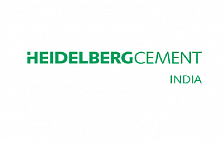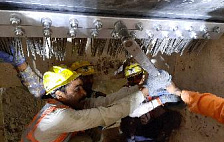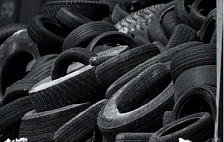In order to make air traffic and cement production sustainable in a low-CO2 world, three players with completely different backgrounds have joined forces in the "Concrete Chemicals" project consortium. Global cement producer CEMEX, Sasol ecoFT, part of the integrated chemical company Sasol, and renewable energy company ENERTRAG plan to produce sustainable aviation fuel (SAF), which will also contribute to the decarbonization of the cement industry.
Both the cement and aerospace industries are widely recognized as the sectors with the greatest challenges in reducing greenhouse gas emissions. The international consortium sets the course for CO 2 -neutral cement production by converting CO 2 into SAF using hydrogen and thus a possibility for CO 2-Provides reduction in both sectors. A Power-to-Liquid (PtL) process is used in SAF production, which is based on the provision of a sustainable carbon raw material, e.g. B. unavoidable industrial sources of carbon dioxide, and the production of green hydrogen by electrolysis using renewable energy. The carbon and hydrogen are converted into synthesis gas, a mixture of carbon monoxide and hydrogen, which is converted using the Fischer-Tropsch (FT) process into longer chain hydrocarbons for the production of e-kerosene or SAF.
To this end, the three partners are pooling their technical know-how in Germany: ENERTRAG will produce green hydrogen exclusively with energy from regional wind and PV systems. CEMEX will capture on-site the CO 2 produced during cement production, which is now a burden in a difficult-to-decarbonize sector, thereby providing another raw material for the production of the SAF and at the same time its CO 2-Reduce emissions. To manufacture the SAF, Sasol ecoFT will contribute its innovative Fischer-Tropsch technology. The e-kerosene will be certified for use in aircraft, which includes its chemical properties such as composition and purity. In addition, the project partners intend that the e-kerosene meets the criteria of EU RED II and can therefore be counted towards the greenhouse gas reduction quota and the prescribed minimum admixture quota for PtL kerosene.
The project includes two scaling stages. First, the hydrogen is produced on-site using electricity from regional renewable energy plants. In the first phase, 15,000 tons of e-kerosene are to be produced annually. For this purpose, 100 tons of CO2 per day are to be separated at the Rüdersdorf site, with 12 tons of H 2combined per day and used for PtL production. In the second stage, larger quantities of hydrogen are to be delivered by pipeline. The green hydrogen will be generated as part of the ENERTRAG-IPCEI project "Elektrolyse-Korridor Ostdeutschland" with an electrolysis capacity of 210 MW, which will enable the production of 35,000 tons of e-kerosene fuel per year. This project also uses only renewable electricity to produce 40 tons of green hydrogen per day. This requires an additional 300 tons of CO2 capture per day.
Like the electrolysis corridor in eastern Germany, Concrete Chemicals is part of the “doing hydrogen” joint project. From H 2 production to transport and consumption, doing hydrogen covers all the essential elements of a H 2 value chain and thus connects H 2 projects in Mecklenburg-Western Pomerania, Brandenburg, Berlin, Saxony and Saxony-Anhalt.
The partners founded Concrete Chemicals GmbH, which is to implement the pioneering project on the CEMEX site in Rüdersdorf near Berlin. All three companies are equal partners in the joint venture. For the implementation of the project, the consortium is preparing funding applications that are to be notified at European level.








